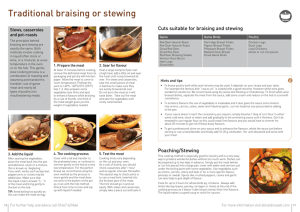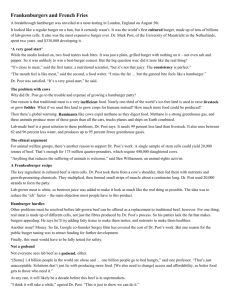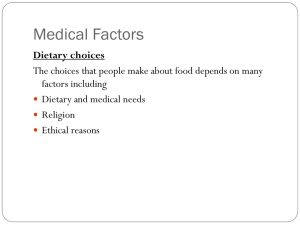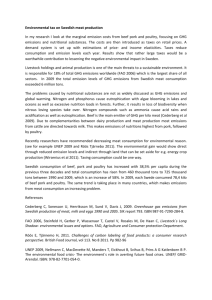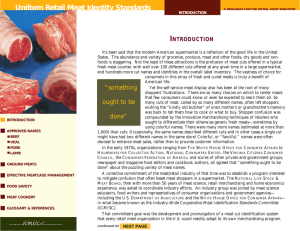Traditional braising
advertisement
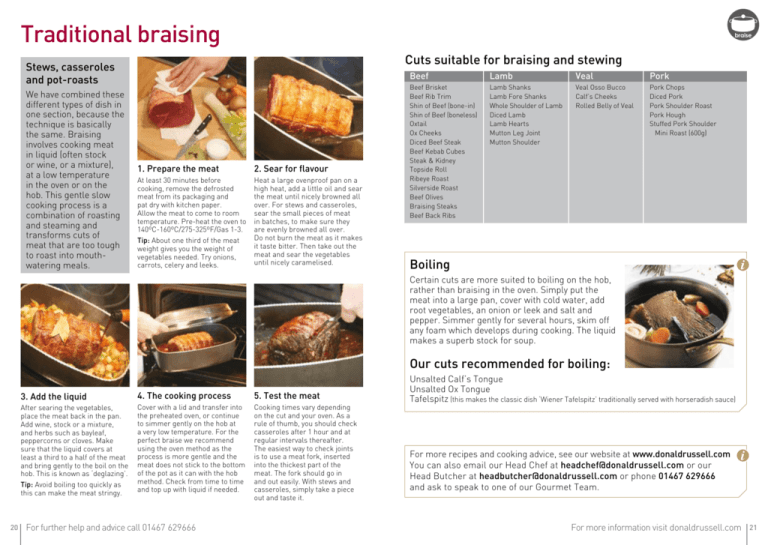
Traditional braising oven braise Cuts suitable for braising and stewing Stews, casseroles and pot-roasts We have combined these different types of dish in one section, because the technique is basically the same. Braising involves cooking meat in liquid (often stock or wine, or a mixture), at a low temperature in the oven or on the hob. This gentle slow cooking process is a combination of roasting and steaming and transforms cuts of meat that are too tough to roast into mouthwatering meals. pan 1. Prepare the meat 2. Sear for flavour At least 30 minutes before cooking, remove the defrosted meat from its packaging and pat dry with kitchen paper. Allow the meat to come to room temperature. Pre-heat the oven to 140ºC-160ºC/275-325ºF/Gas 1-3. Tip: About one third of the meat weight gives you the weight of vegetables needed. Try onions, carrots, celery and leeks. Heat a large ovenproof pan on a high heat, add a little oil and sear the meat until nicely browned all over. For stews and casseroles, sear the small pieces of meat in batches, to make sure they are evenly browned all over. Do not burn the meat as it makes it taste bitter. Then take out the meat and sear the vegetables until nicely caramelised. Beef Lamb Beef Brisket Beef Rib Trim Shin of Beef (bone-in) Shin of Beef (boneless) Oxtail Ox Cheeks Diced Beef Steak Beef Kebab Cubes Steak & Kidney Topside Roll Ribeye Roast Silverside Roast Beef OIives Braising Steaks Beef Back Ribs Lamb Shanks Veal Osso Bucco Lamb Fore Shanks Calf’s Cheeks Whole Shoulder of Lamb Rolled Belly of Veal Diced Lamb Lamb Hearts Mutton Leg Joint Mutton Shoulder Veal Pork Pork Chops Diced Pork Pork Shoulder Roast Pork Hough Stuffed Pork Shoulder Mini Roast (600g) Boiling Certain cuts are more suited to boiling on the hob, rather than braising in the oven. Simply put the meat into a large pan, cover with cold water, add root vegetables, an onion or leek and salt and pepper. Simmer gently for several hours, skim off any foam which develops during cooking. The liquid makes a superb stock for soup. Our cuts recommended for boiling: 20 3. Add the liquid 4. The cooking process 5. Test the meat After searing the vegetables, place the meat back in the pan. Add wine, stock or a mixture, and herbs such as bayleaf, peppercorns or cloves. Make sure that the liquid covers at least a third to a half of the meat and bring gently to the boil on the hob. This is known as ‘deglazing’. Tip: Avoid boiling too quickly as this can make the meat stringy. Cover with a lid and transfer into the preheated oven, or continue to simmer gently on the hob at a very low temperature. For the perfect braise we recommend using the oven method as the process is more gentle and the meat does not stick to the bottom of the pot as it can with the hob method. Check from time to time and top up with liquid if needed. Cooking times vary depending on the cut and your oven. As a rule of thumb, you should check casseroles after 1 hour and at regular intervals thereafter. The easiest way to check joints is to use a meat fork, inserted into the thickest part of the meat. The fork should go in and out easily. With stews and casseroles, simply take a piece out and taste it. For further help and advice call 01467 629666 Unsalted Calf’s Tongue Unsalted Ox Tongue Tafelspitz (this makes the classic dish ‘Wiener Tafelspitz’ traditionally served with horseradish sauce) For more recipes and cooking advice, see our website at www.donaldrussell.com You can also email our Head Chef at headchef@donaldrussell.com or our Head Butcher at headbutcher@donaldrussell.com or phone 01467 629666 and ask to speak to one of our Gourmet Team. For more information visit donaldrussell.com 21


